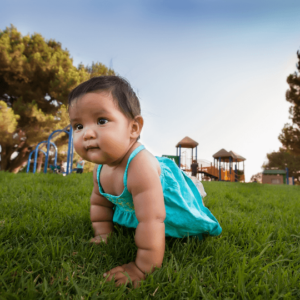Physical activity for children is becoming more heavily emphasized today, primarily for health reasons. In an effort to offset alarming rates of childhood obesity, getting children into physical routines at young ages has become the focus for many pediatricians. Reducing screen time and increasing activity is now a common suggestion to parents asking how they can help their children form healthier foundations in their younger years. As a result, indoor play and indoor play facilities have become more common. For infants, toddlers, and preschool-age children, physical activity has an even greater impact on their health than older children. After mastering crawling and walking, young children need active play to hone their fundamental skills of movement.
Benefits
Creating a routine of physical activity at a young age can help a child in the future to maintain healthy habits. Sue Robb OBE argues that physical activity routines at a young age goes beyond standardizing regular exercise to combat weight issues. “Physical activity helps improve confidence and self-esteem and develops healthier social, cognitive, and emotional skills. It also builds strength, concentration, and coordination.” With a range of activities, children can work both their bones and large muscles, in addition to their control over small muscles.
Ways to Stay Active 
In the first year of life, children need to work on balance and coordination, and support as they learn to move on their own.
- Reaching for toys just outside of grasp
- Tummy time to encourage crawling
- Help with walking
Ages one to three are a time to promote healthy habits. Toddlers should be involved in active play often, with fun activities stimulating creativity and life-long love of physical activity.
- Kicking a small ball in the bathtub
- Playing follow the leader
- Chasing butterflies
- Dancing
Physical activity for children ages three and up encourages them to get involved in recreational activities and sports later in life.
- Hitting, throwing, and catching a soft ball
- Throwing balls into a bucket or trash bin
- Making an obstacle course
- Bike riding or other wheeled activities
Indoor Play
Active play should be encouraged daily, but not every day will have nice weather. For the days children can’t play outdoors, create fun activities to safely play in the house.
- Kick a beanbag back and forth across the floor
- Play “stop and go” games, like “Red Light, Green Light”
- Build a fort
- Hallway bowling with plastic water bottles
- Hide and seek
- Musical chairs
- Playing dress up
Interested in incorporating active play into your child care operations? The 4-C Resource Room offers a variety of developmentally appropriate materials and resources to support early childhood professionals in their mission to provide quality early care and education. Visit the 4-C Resource Room to find prepared activity kits, themed backpacks of activity-based toys, developmentally appropriate toys, and more. Beginning September 7, 2021, the Resource Room will be open from 9:00am-3:00pm Monday through Thursday. Check it out!
